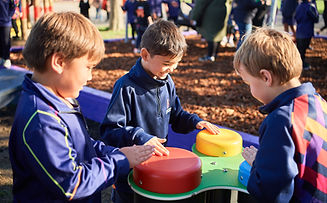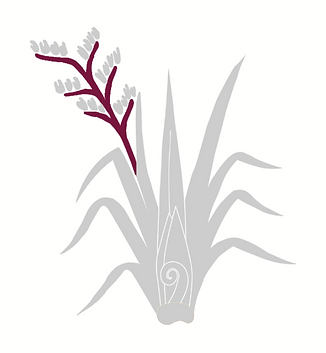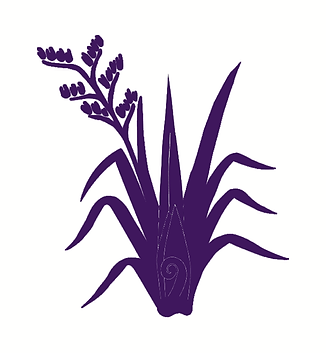
OUR TAMARIKI
Our tamariki are at the heart of everything we do. Each child is on their own unique journey, and we are here to guide, support, and inspire them every step of the way.
Our vision is to awaken the potential of every child - to nurture confident, capable learners who believe in themselves and are equipped to thrive in an ever-changing world. This vision is grounded in the values that shape our school culture:
-
Whanaungatanga: Embracing each other - building strong, respectful relationships and a sense of belonging
-
Manaakitanga: Lifting the mana of others - showing care, kindness, and compassion for ourselves and others
-
Wairuatanga: Self-reflecting - honouring spiritual and cultural identities, respecting te Whare Tapa Whā
-
Rangatiratanga: Weaving people together - encouraging leadership, responsibility, and self-determination
Through these values, our tamariki learn to navigate their learning journey with confidence, curiosity, and pride in who they are and where they come from. At Blenheim School, we celebrate every learner as taonga - treasured and full of potential.
At Blenheim School, we have seven classes, each named after different parts of the harakeke (flax plant) - a powerful symbol connected to our school and community name - Waiharakeke. Just as each part of the harakeke plays a vital role in the life of the plant, each class represents an important stage in the journey of our tamariki.


WHATUKURA
Our babies. Our youngest learners. Our tamariki New Entrants. Before our harakeke plant can flourish, the sacred stones of knowledge are placed to ensure the growing roots of the harakeke are grounded - strong, nourished, and sacred. Whatukura symbolises these first foundations.
In Māori tradition, Whatukura are sacred stones of knowledge brought down from the heavens by Tāne, the atua (god) of the forest and of knowledge. Alongside the kete wānanga (baskets of learning), the Whatukura were placed in a sacred house in the heavens, where they became symbols of divine wisdom and spiritual power. They were later used in the Wharekura, or traditional schools of learning, to guide the passing on of sacred knowledge. By naming our New Entrant class Whatukura, we acknowledge the sacred beginning of each child’s learning journey. Just like the stones of old, our tamariki are precious, full of potential, and ready to be nurtured with care, love, and knowledge. It is here that their foundation is laid - the first steps in a lifelong journey of learning, identity, and connection.



KĀKANO
The Kākano is the seed of the harakeke - the very beginning of life. In the life cycle of the harakeke, the kākano is where everything starts. It holds the potential of the entire plant, just as our young learners carry within them all the potential of what they can become. The Kākano class represents the early years of growth, when the seed has been planted and is beginning to take root. It is a time of nurturing, discovery, and continuing to set those strong foundations. Just as the kākano needs the right environment to grow - warmth, water, sunlight, and care - our tamariki in this stage need support, love, and guidance to help them thrive. The kākano reminds us that every child is a taonga (treasure), full of promise. When we care for the seed well, we help the harakeke grow strong - and in doing so, we strengthen the whole pā harakeke (flax family).



PAKIAKA
The roots of the harakeke - he strong, hidden network beneath the soil that anchors the plant, draws up nourishment, and keeps it steady in all conditions. Without healthy pakiaka, the harakeke cannot survive. The Pakiaka class symbolises tamariki who are establishing their foundation - learning who they are, where they belong, and beginning to grow confidence in themselves as learners. Just as roots quietly do the essential work of holding and feeding the plant, our tamariki in Pakiaka are developing the values, skills, and relationships that will support their learning journey. The Pakiaka reminds us that strength starts below the surface - in the connections we build, the support we receive, and the sense of belonging we nurture. It’s a powerful stage where identity and resilience begin to take hold.



KORU
The young, unfurling shoot at the centre of the harakeke. It is tender and new, full of life and potential. The koru represents new beginnings, growth, and the journey forward, making it a fitting name for our learners who are starting to stretch, explore, and reach outward with increasing confidence. In the structure of the harakeke plant, the koru is surrounded and protected by the inner leaves, just like how our tamariki are supported by their whānau, teachers, and wider school community. It is from this secure base that the koru begins to open and take shape, forming the next generation of strong, connected individuals. The Koru class symbolises tamariki who are emerging with curiosity and independence, beginning to show leadership in their own learning while still held within the nurturing heart of the school. The koru reminds us that growth is a spiral journey - one that unfolds over time, with each new layer building on the last.



RITO
The central shoot or new leaf of the harakeke plant. It is the youngest, most delicate part - protected on either side by the awhi rito, the parent leaves. In te ao Māori, the rito represents the child at the centre of the whānau, surrounded and supported by caregivers, community, and culture. The Rito class symbolises tamariki who are growing strong at the heart of our school - developing identity, confidence, and a deeper understanding of themselves as learners. Just like the rito in the plant, our tamariki are nurtured so they can stand tall and grow into the next generation of leaders. The harakeke cannot be harvested from the centre - the rito must never be cut - because the life and future of the plant depend on it. This reflects how deeply we value and protect our tamariki. They are taonga (treasures), and their growth is central to the wellbeing of the whole school community.



KŌRARI
The tall flowering stem that grows from the harakeke. Unlike the leaves, the kōrari grows upward and outward, standing tall above the plant. It produces flowers and seeds, attracting birds like the tūī, and allows the harakeke to reproduce and spread. The Kōrari class symbolises our senior tamariki - those who are developing as leaders, ready to blossom, and preparing to carry their knowledge into the wider world. Just like the kōrari, they have grown from the centre, supported by their whānau and community, and are now reaching out - confident, capable, and ready to lead. The kōrari reminds us that leadership is about standing tall while remaining connected to your roots, and that sharing what we have learned is how we help others grow. It is the final stage before the seeds are released - the moment where our learners begin to leave their mark and influence the next generation.



HARAKEKE
Our Harakeke class is the older senior class of the school. These tamariki represent the full strength and maturity of the plant itself - the culmination of every stage of growth. They have been the kākano (seed), rooted in the pakiaka (roots), protected as the rito (inner shoot), and have grown tall like the kōrari (flowering stem). Now, as Harakeke, they embody the whole plant - strong, balanced, and connected. Harakeke is not just one part - it is the collective. It stands as a symbol of everything our learners have become: confident in who they are, guided by our values, and ready to support others. Like the harakeke in nature, which thrives when all parts work together, these students have learned through each stage and now contribute back to the school as role models, tuākana, and emerging leaders who have awoken their potential. The Harakeke class symbolises unity, resilience, and readiness - prepared to take their next steps while staying grounded as they continue to navigate their learning journey and cultural identity beyond Blenheim School.



